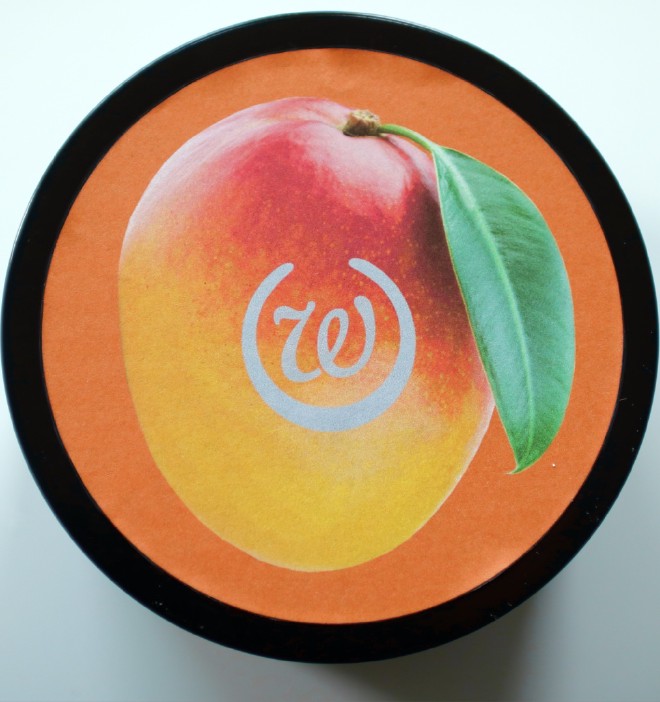Part of the DIY Recreations series.
Ingredients
Water Phase
- 152.5g Distilled Water
- 12.5g Glycerine
- 1.3g Xanthan Gum
Oil Phase
- 37.5g Fractionated Coconut Oil (substitute with regular coconut oil or another liquid oil)
- 25g Mango Butter
- 10g Olive-derived Emulsifier
- 5g Glyceryl Stearate (for SE use 6%)
- 6.3g Cetyl Alcohol
Cool Down
- 2.5g Vitamin E
- 2.5g Preservative Eco
- 2.5g Essential Oils (Optional Fragrance)
Method
- In two separate heat-resistant glasses, measure out
- the water phase ingredients: Distilled water, Glycerine and Xanthan Gum;
- the oil phase ingredients: Coconut Oil, Mango Butter, Olive-derived Emulsifier, Glyceryl Stearate and Cetyl Alcohol
- Gently melt both phases in separate heat proof containers over a low heat using a double boiler or bain marie
- Once the oil and water phases have completely melted, slowly pour the heated water phase into the oil phase. Use a spatula to stir until everything is combined, then transfer onto a flat surface
- To emulsify and thicken, use an immersion blender or whisk. As the mixture cools and more air is incorporated, it will start to thicken and change to a pale cream colour, this should take approximately 5 minutes
- When you are happy with the consistency, you can move on to adding the preservative and antioxidant
- Use a scale to add the Cool Down ingredients: Vitamin E, Preservative Eco and any essential oils you wish to add for fragrance
- Give a short, quick mix either by hand or using a blender to ensure all the Cool Down ingredients are evenly distributed
Store your Body Butter in a dark-coloured or tinted glass container to help prolong its shelf life.
This recipe makes 250g. See the interactive formula calculator to customise this recipe and amount.
Recreating The Body Shop’s Body Butter
Nothing brings back the memories like opening one of The Body Shop’s Body Butters and getting hit by that delightfully sweet fragrance, feeling the impossibly smooth butter under your fingers before watching it melt into your skin. To my younger self, this was the ultimate indulgence and - at an eye-watering £16 - was certainly a rare treat!
If this range was your first introduction into body butters you might be surprised at the wide variety on offer today. From familiar shea and cocoa butter bases to “exotic” Cupuaçu Butter and Murumuru butters, body butters can be densely packed and extremely thick.
But body butters can also encompass delicate offerings that look more like dessert than moisturisers. These differences are far from skin deep (pun intended!), and they illustrate how body butters have come to refer to two very different products!
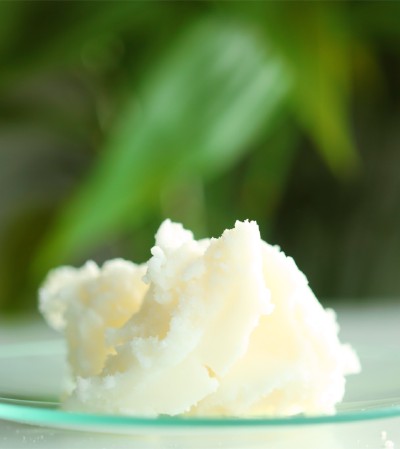
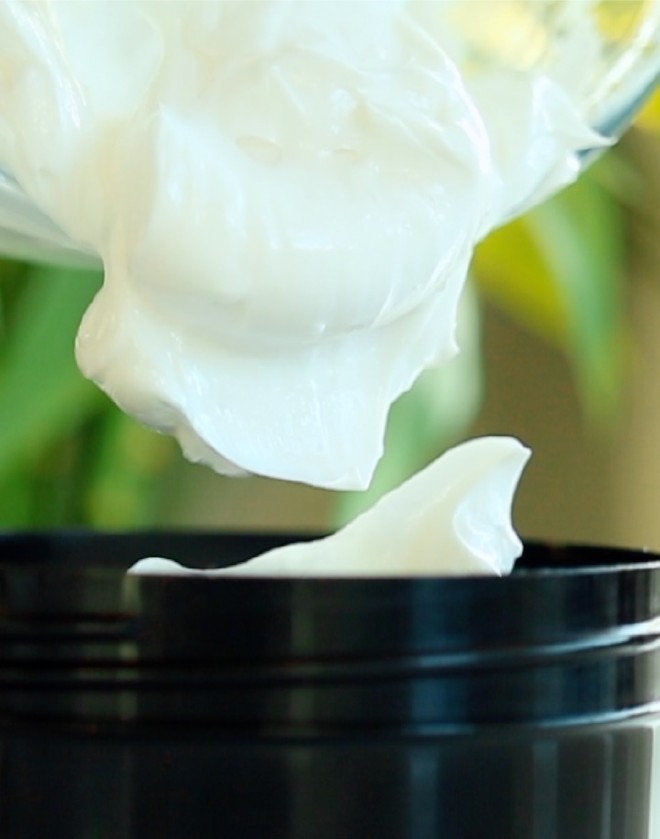
What are Emulsified Body Butters?
Although a staple in many Caribbean and African households, as body butters moved into the mainstream the term once used to describe anhydrous butter-based emollients, soon became synonymous with any thick or intensive moisturiser. Enter in a new wave of body butter hybrids that combine water-based products with the richness of body butters. The water adds hydrating capabilities along with quicker absorption, whilst still maintaining far higher levels of butters and oils when compared to a normal cream or lotion.
If traditional body butters were considered modest, with some iterations only requiring a single butter and oil, emulsified body butters are extravaganzas with most recipes requiring a minimum of water, an emollient, emulsifier, stabiliser, thickener and preservative.
The Body Shop’s wide range of Body Butters all follow this basic formula. As one of the most popular products in this category, I thought it would be fun to try and recreate their signature body butter.
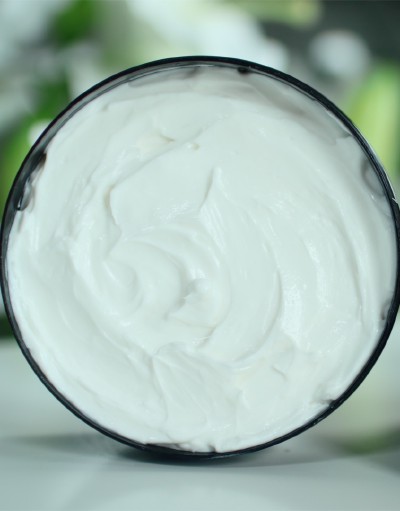
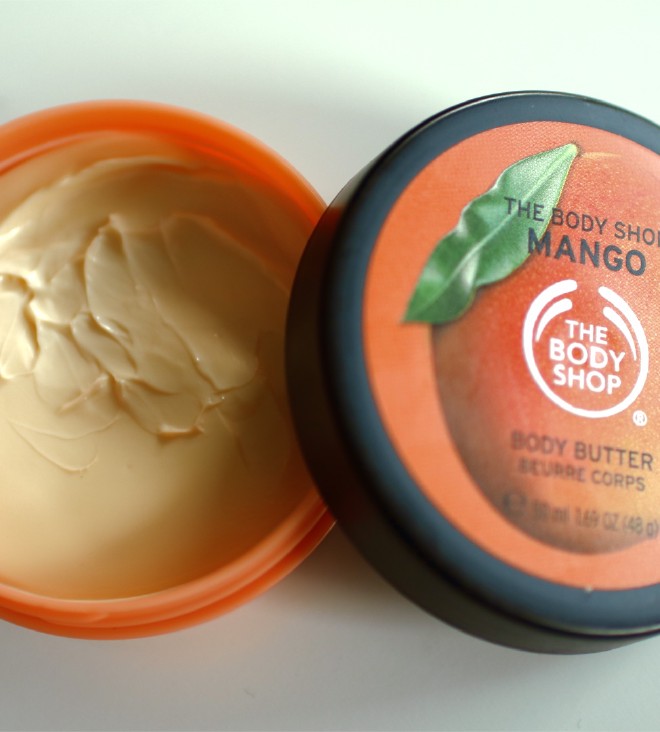
The Body Shop’s Body Butters
It’s important to note that each variety of The Body Shop’s Body Butters e.g. Mango, Shea, Coconut etc have a completely different set of ingredients with seemingly no standard formula across the range.
Some have almost double the ingredients, whilst others don’t contain any butter at all (I’m staring in disbelief at the “frosted plum butter” label as I type!) I’ve opted for their most simple (and natural-ish) ingredients list – found on the Mango Body Butter. We’ll use this as our reference throughout this tutorial.
A few early surprises on the label suggested that recreating this body butter would be an interesting challenge:
- Multiple Emulsifiers
- Silicones
- Fragrance
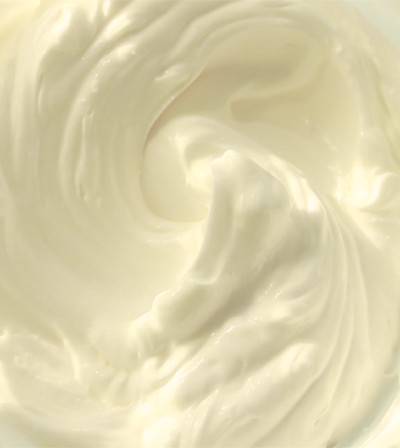
The addition of water make emulsified body butters far more versatile but also more complex to make. If you’re new to making emulsions like creams or lotions, see my beginner’s guide to lotion-making for a full introduction. Emulsifiers and preservatives are unavoidable for water and oil to exist in the same product, but emulsified body butters go one step further to include other ingredients that alter the texture of the product for a more appealing application.
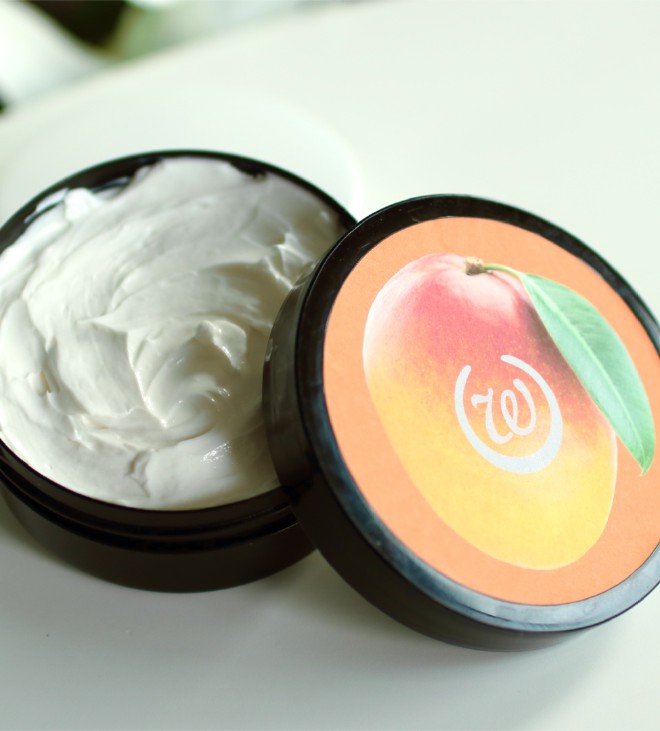
How to make an emulsified body butter
The key to making an emulsified body butter like The Body Shop’s is to balance using oils without being oily. This may seem like an impossible task but it is greatly helped by choosing the right ingredients.
Emulsifiers
Contributing to the feel and performance of The Body Shop’s butters are PEG-100 Stearate and Glyceryl Stearate. They’re often combined to make an emulsifier that creates softer and less greasy emulsions.
PEG-100 Stearate
“PEG” is an abbreviation for polyethylene glycol and describes a mix of compounds that function as emulsifiers, emollients and penetration enhancers. It’s a common ingredient used in a wide variety of cosmetics but as concerns have been raised about the safety of PEGs, especially in relation to bi-products and possible irritation of sensitive skin, I’ve opted to leave it out of this recreation as I don’t believe it’s essential to our finished body butter.
Glyceryl Stearate
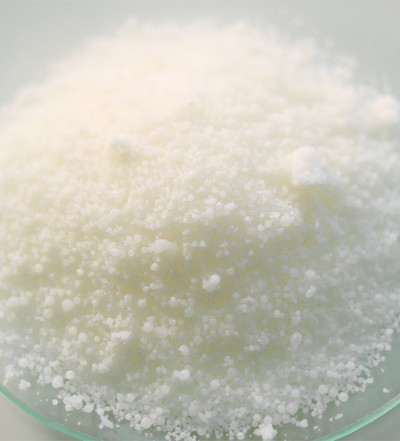
On it’s own it is not a complete emulsifier so it is often combined with other emulsifiers, or Glyceryl Stearate SE is used instead.
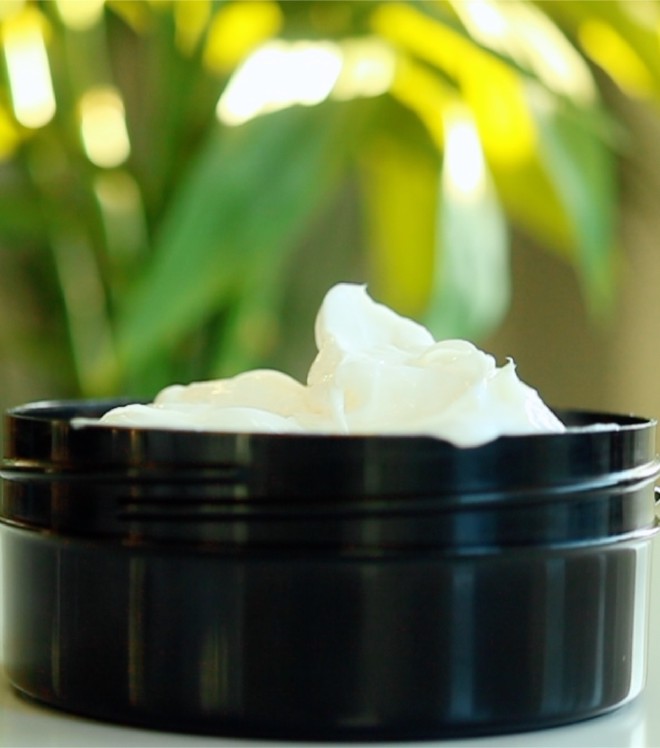
Why use silicones in body butters?
Ah, silicones. Infamous to the point that it’s practically become an adjective! If I describe something as “silicone-y,” it might conjure up ideas of silky, powdery soft, artificially smooth substances. But despite not having the best reputation - especially for acne-prone skin, they are helpful for imitating the feel of oils and butters without having to actually use them. But why would you want to do that?
Well… here’s a perfect example: emulsified body butters are essentially offer the feel of body butters without any of the practical implications (e.g. slower absorption, residue on the skin, or ‘greasiness’).
Silicones can imitate the soft richness you’d expect from butter-heavy products, but don’t impart any oil on the surface of the skin. This results in “body butters” that look and feel rich but are much lighter than their oil-based counterparts.
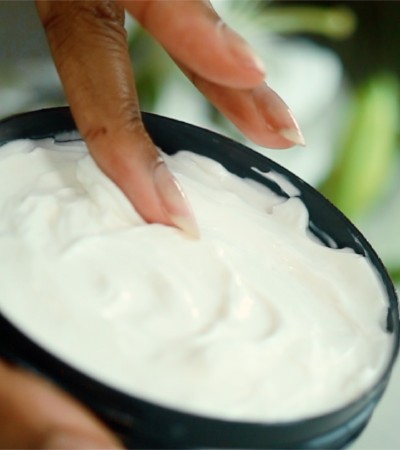
Of course, these are mostly cosmetic benefits that do very little for providing genuine moisture. Although there are a few alternatives to silicones, none that do the job as effectively, so again this is another Body Shop ingredient we’ll skip today.
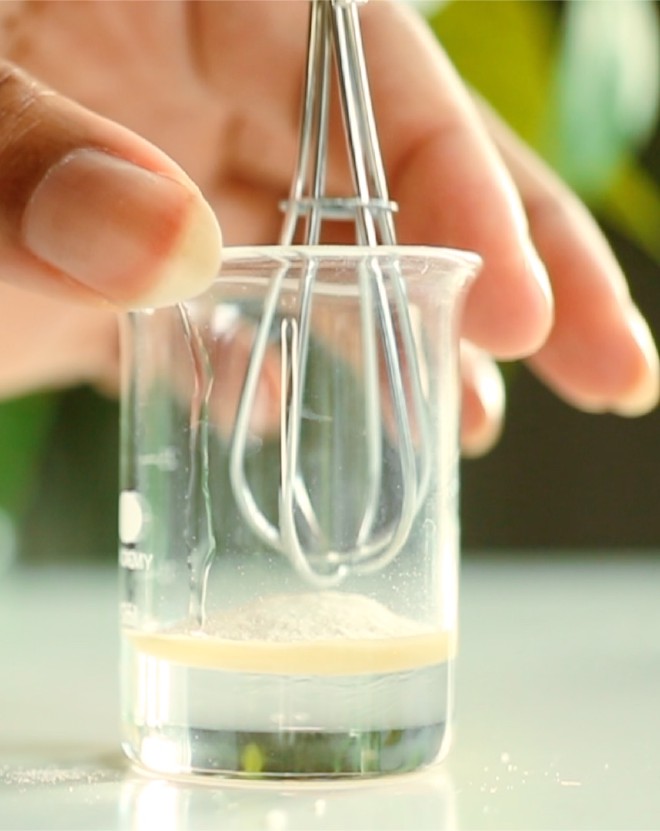
Thickeners
So how do you get the appearance of body butters without the butter? That’s where our old pals fatty alcohols and xanthan gum come into play!
-
Cetyl Alcohol - this can also be substituted for any other fatty alcohol like cetearyl or stearyl. They work as natural thickeners, co-emulsifiers and enhancing the smooth feel of the butter.
This allows us to limit the amount and tackiness of natural butters without compromising the body butter’s thick texture.
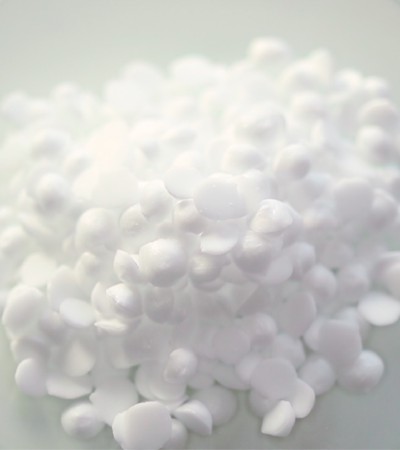
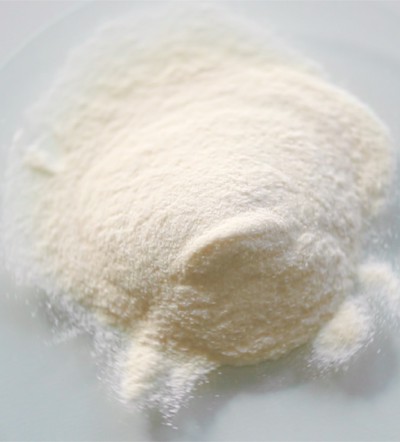
-
Xanthan Gum - is both a thickener and stabiliser to ensure the longevity of the body butter. Most emulsions benefit from having two types of thickeners: oil-based (fatty alcohol) and water-based (gums), it helps to provide a richer and more cohesive final texture.
Only a small percentage of xanthan gum is required so it won’t result in a “gloopy” or gum-like body butter.
As far as recreations go The Body Shop’s was surprisingly doable! Even with the exclusions and (more natural ingredient) substitutions, the result is still a wonderfully thick, buttery smooth, spreadable body butter that effortlessly disappears into your skin. It also provides lasting moisture, the full benefits of hybrid cream body butters are on full display each time I use this. In terms of where this lands on the moisture scale (1 being dry as the Sahara and 10 being Niagara Falls), I’d put this at a solid 7.5. It’s at the top end of what intensive creams can do!
It’s definitely worth giving this a go if you’d like a more cost-effective, and natural version of the famous Body Butters! This body butter will last up to 6 months.
However, if you came here expecting a classic body butter, this might leave you feeling a little hollow. It may be at the the top end of what emulsions can do - but it’s a far cry from the true potential of oil-based body butters. For that, try my impossibly light whipped body butter recipe!
